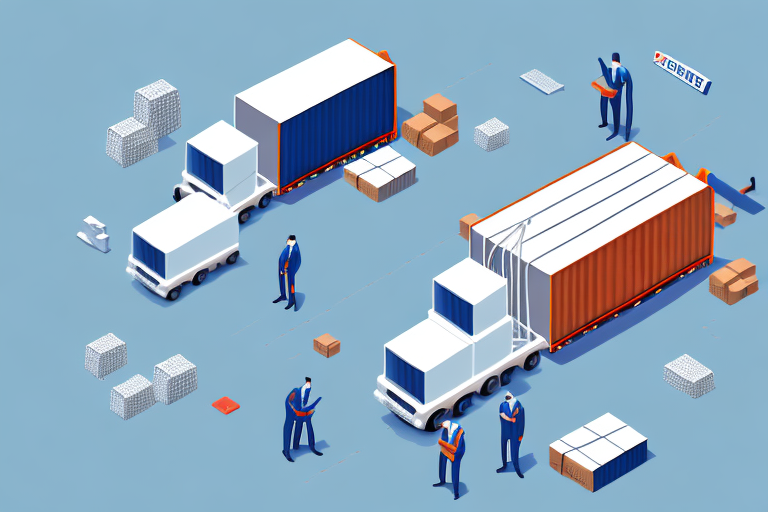Exploring the Benefits of Delivery Jibs for Businesses
In today's fast-paced business environment, efficient and cost-effective delivery solutions are essential. Delivery jibs offer a versatile and reliable way to enhance delivery operations, benefiting businesses of all sizes. This article delves into the various advantages of using delivery jibs, including increased efficiency, cost savings, enhanced safety, and improved customer satisfaction. Let's explore how delivery jibs can transform your business operations.
Understanding Delivery Jibs
What Are Delivery Jibs and How Do They Work?
Delivery jibs are mechanical arms attached to the rear of delivery vehicles or trucks, designed to lift and transport heavy or bulky items from the vehicle to their final destination. Utilizing hydraulic or pneumatic systems, delivery jibs provide the power needed to lift and move goods with ease. Most models feature a swivel arm that can rotate 360 degrees, offering flexibility to handle items in various directions. This versatility makes delivery jibs a valuable tool across multiple industries.
According to industry reports, the demand for efficient loading and unloading solutions like delivery jibs has increased by 15% over the past year, reflecting their growing importance in logistics and supply chain management.
Types of Delivery Jibs Available
There are several types of delivery jibs available, each catering to specific business needs:
- Hydraulic Liftgates: Powered by hydraulic cylinders, these liftgates are ideal for heavy-duty applications, capable of lifting substantial weights with precision.
- Pneumatic Liftgates: Utilizing compressed air, pneumatic liftgates offer quieter operation, making them suitable for environments where noise reduction is crucial.
- Railgate Liftgates: Designed for loading and unloading goods from railway cars, these jibs are mounted on trucks and can be easily positioned to facilitate rail logistics.
Choosing the right type depends on the specific requirements of your business, including load capacity, operating environment, and intended use.
How to Choose the Right Delivery Jib for Your Business Needs
Selecting the appropriate delivery jib involves considering several factors:
- Weight Capacity: Assess the maximum weight your business needs to handle to ensure the jib can accommodate it.
- Lift Height: Determine the height requirements based on the typical delivery locations and vehicle configurations.
- Swivel Range: A wider swivel range allows for greater flexibility in maneuvering items.
- Power Source: Decide between hydraulic, pneumatic, or electric systems based on operational needs and environmental considerations.
Consulting with manufacturers and conducting a needs assessment can aid in making an informed decision.
Business Benefits of Delivery Jibs
Increasing Efficiency
One of the standout benefits of delivery jibs is the significant boost in operational efficiency. By automating the lifting and transporting process, delivery jibs reduce the time and effort required for each delivery. According to a study by the U.S. Bureau of Labor Statistics, businesses that implement automated lifting solutions can see a 20-30% increase in delivery speed, leading to faster turnaround times and the ability to handle a higher volume of deliveries.
Cost-Effectiveness
While the initial investment in a delivery jib may seem substantial, the long-term cost savings are notable. Delivery jibs can reduce the need for additional labor, lowering overall labor costs. Furthermore, by minimizing workplace injuries—a common cause of costly workers' compensation claims—businesses can save money and allocate resources more efficiently. A report from SHRM highlights that businesses can reduce labor costs by up to 15% through the implementation of automated delivery solutions.
Impact on Customer Satisfaction and Loyalty
Efficient and reliable deliveries play a crucial role in customer satisfaction. Delivery jibs ensure that products are delivered promptly and in excellent condition, enhancing the overall customer experience. Satisfied customers are more likely to become repeat buyers and advocate for your business through positive word-of-mouth. According to a survey by Forbes, 89% of customers are more likely to return to a business that provides reliable and timely delivery services.
Safety and Employee Welfare
Reducing Workplace Injuries
Manual handling of heavy items is a leading cause of workplace injuries, including strains and sprains. Delivery jibs mitigate these risks by automating the lifting process, reducing the physical strain on employees. The Occupational Safety and Health Administration (OSHA) reports that businesses implementing automated lifting equipment see a 40% reduction in injury-related incidents. Creating a safer work environment not only protects employees but also enhances job satisfaction and retention.
Environmental Benefits
Delivery jibs contribute to environmental sustainability in several ways. By streamlining delivery processes, they reduce fuel consumption and greenhouse gas emissions associated with multiple delivery trips. Additionally, the precision and efficiency of delivery jibs minimize the need for excessive packaging, thereby decreasing waste. Businesses aiming to lower their carbon footprint can significantly benefit from integrating delivery jibs into their operations. A study by the Environmental Protection Agency (EPA) indicates that optimized delivery operations can reduce emissions by up to 25%.
Technological Advancements
The Role of Technology in Enhancing Delivery Jibs
Advancements in technology have greatly enhanced the functionality and effectiveness of delivery jibs. Modern jibs are equipped with sensors that detect obstacles, preventing collisions and enhancing safety. Additionally, remote control features allow operators to manage jibs from a safe distance, improving operational flexibility. Integration with fleet management systems enables real-time monitoring and maintenance scheduling, ensuring optimal performance.
The Future of Delivery Jib Technology
The future of delivery jib technology is poised for significant innovations. Automation and artificial intelligence (AI) are expected to play pivotal roles, enabling predictive maintenance, advanced obstacle detection, and autonomous operation. These enhancements will further increase efficiency, safety, and reliability. Moreover, the integration of renewable energy sources, such as solar-powered jibs, aligns with the growing emphasis on sustainability and eco-friendly business practices.
Implementations and Case Studies
Examples of Successful Implementation
Several businesses across various industries have successfully integrated delivery jibs into their operations, reaping substantial benefits:
- Furniture Retailers: Companies like IKEA utilize delivery jibs to handle large furniture items, ensuring timely and damage-free deliveries.
- Construction Firms: Firms such as Caterpillar employ delivery jibs to transport heavy construction materials efficiently to job sites.
- Food and Beverage Services: Businesses like Coca-Cola use delivery jibs to streamline the distribution of products, enhancing delivery speed and reliability.
These implementations demonstrate the versatility and effectiveness of delivery jibs in enhancing operational workflows and customer service.
Maintenance and Misconceptions
Understanding Maintenance Requirements
Proper maintenance is crucial to ensure the longevity and optimal performance of delivery jibs. Routine maintenance tasks include:
- Regular lubrication of moving parts to prevent wear and tear.
- Inspection of hydraulic or pneumatic systems for leaks and pressure levels.
- Replacement of worn or damaged components to avoid operational failures.
- Software updates for integrated control systems to enhance functionality.
Adhering to a strict maintenance schedule can prevent costly repairs and extend the lifespan of delivery jibs.
Addressing Common Misconceptions
Despite their benefits, several misconceptions about delivery jibs persist:
- Delivery Jibs Are Expensive: While the initial investment may be significant, the long-term savings in labor costs and injury prevention make delivery jibs a cost-effective solution.
- They Are Difficult to Operate: Modern delivery jibs are designed with user-friendly controls and automation features, making them easy to operate with minimal training.
- They Are Only for Large Businesses: Delivery jibs are scalable and can be tailored to fit the needs of businesses of all sizes, from small enterprises to large corporations.
Understanding the true benefits and capabilities of delivery jibs can help businesses overcome these misconceptions and leverage the technology effectively.
Conclusion
Delivery jibs present a multifaceted solution for businesses seeking to enhance their delivery operations. By increasing efficiency, reducing costs, improving safety, and contributing to environmental sustainability, delivery jibs offer comprehensive benefits that can drive business growth and customer satisfaction. As technology continues to advance, the capabilities of delivery jibs will expand, providing even greater value to businesses across various industries. Investing in delivery jibs is a strategic move that can position your business for long-term success in a competitive marketplace.




















